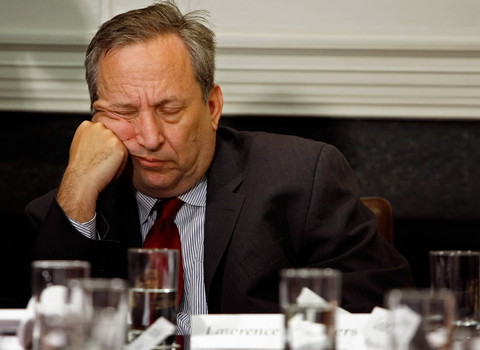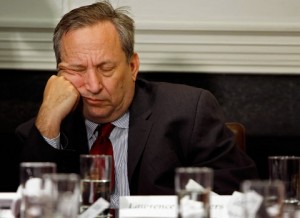 Last week I described future Republican Presidential nominee Jeb Bush’s tax proposals. This week, for balance, I will review future Democratic Presidential nominee Clinton’s tax proposals.
Last week I described future Republican Presidential nominee Jeb Bush’s tax proposals. This week, for balance, I will review future Democratic Presidential nominee Clinton’s tax proposals.
Now, before you #FeelTheBern folks write to tell me about your favorite candidate’s chances in the Democratic primaries, I should say the following: Every letter you write me must be followed up with a $1 bill in the mail to me when Hillary seals the nomination in Summer 2016. I’ll do the same if your candidate wins. Agreed? I’m happy to receive your letters, in that case. Thanks.
Prominent on Clinton’s website – under the topic of “Economy” – are two tax breaks.
Education tax breaks
The first tax break for students is standard stuff. Every family with a student enrolled in higher education is eligible for a $2,500 credit, via the already existing American Opportunity Tax Credit, currently set to expire in 2017. Clinton’s idea there is to make it permanent. No big change there.
Profit-sharing
More interestingly, Clinton calls for private employers to receive a tax advantage for including employees in a profit-sharing plan. Meaning, if every eligible worker receives a proportion of annual profits, then the federal government would incentivize the private employer through lower corporate taxes. Clinton cites studies that link higher worker productivity to profit-sharing plans.
In my town, a large grocery chain (with an estimated 80,000 employees!) named HEB recently announced plans that sound quite similar to Clinton’s tax proposal. HEB’s stated purpose is to foster employee loyalty and enhance employee financial stability. Employees who own HEB shares would qualify for profit-sharing dividends, similar to what Clinton would like to push companies to do through this tax plan.
HEB did not wait for Clinton’s tax incentive to announce the change. It’s unclear from Clinton’s website whether profit-sharing in the form of private stock ownership is what she has in mind, or some other unstated mechanism.
A skeptical part of me thinks employers like HEB will decide to share profits – or not – based on factors much bigger than a possible one-time federal tax incentive like Clinton proposes. But I could be wrong.
Interestingly, the Clinton campaign includes estimates of the cost of these two taxes, something not obvious on the Bush campaign site.
The college credit, she estimates, would cost $350 Billion over 10 years.
The profit-sharing tax incentive, she estimates, would cost $20 Billion over ten years.[1] So, combined, we’re talking $37 Billion per year, which sounds like a big number to me, but really comes to less than 1% of the Federal Government’s annual expenditures.
How do you pay for these things?
The only answer on her website is to “close loopholes” to make up the lost revenue. This is an interesting example of closing loopholes to pay for other loopholes. But I suppose one person’s “loophole” is another person’s thoughtfully crafted tax benefit? Also, “closing loopholes” is what one always says when one needs a cop-out answer.
Estate Tax
This is the best of all taxes, just ask me. Clinton’s campaign website does not mention her views, but I can make an educated guess.
Clinton voted as a Senator to maintain taxes on estates as small as $1 million, so we can intuit that she supports maintaining or increasing estate taxes. On the other hand, since that time she’s acquired a grandchild and we’ve learned she and her husband have earned over $100 million (!) after leaving the White House, mostly through speaking fees (!). Her personal incentives at least have evolved a bit on this issue
Burden of tax compliance
The Jeb! campaign made comprehensive tax reform its central proposal, arguing that the cost of filing taxes added up to $168 Billion per year for individuals and corporations.
The Clinton campaign also mentions this problem in the section on jumpstarting small businesses. Her focus remains small, however, stating “The smallest businesses, with one to five employees, spend 150 hours and $1,100 per employee on federal tax compliance. That’s more than 20 times higher than the average for far larger firms. We’ve got to fix that.”
I’m pretty sure adding loopholes isn’t going to help, and there is not a single specific simplification proposal on her website, but I guess it’s the thought that counts?
Carried Interest
I’m a bit obsessed with carried interest taxes – as a former hedge funder – except my views would not be popular with hedge funders.
Fortunately Clinton says she would eliminate hedge funders’ favorite tax break. This makes me happy.
Progressive taxation
Along a similar vein, Clinton proposes enacting the ‘Buffett Rule’ to ensure that wealthy folks pay a higher proportion of their income than lower earners. Only a monster – or, you know, Steve Forbes – disagrees with the idea of progressive income taxation, so that’s not a surprise.
The real reason Buffett pays a lower tax rate than his secretary is that he earns money on his money through capital gains, rather than through a salary. If you want progressive tax rates, you have to address the favorable taxation of capital gains and dividends, rather than salaried income, because that’s where wealthy people actually make their money.
What is a bit innovative is Clinton’s proposal to incentivize long-term investing through a gradual reduction in the capital gains tax. Under Clinton’s plan, the longer you hold the investment, the less you pay in taxes.
Clinton’s capital gains tax proposal is a bit of behavior-modification meddling, but I mostly forgive that because it rewards the buy-and-hold investor behavior that everyone should adopt.
Next week: An analysis of third-party candidate Trump’s tax policies. Kidding! A genius like Trump knows tax policies are for Losers!
A version of this post ran in The San Antonio Express News.
Please see related posts:
Shhhh…Please don’t talk about my tax loophole
Adult conversation about income tax
[1] Incidentally, for a wholly new tax proposal, I have no confidence that Clinton’s $20 billion is the right number. It totally depends on how many companies adopt the plan to share profits, and that seems quite unknowable at this time.
Post read (321) times.



